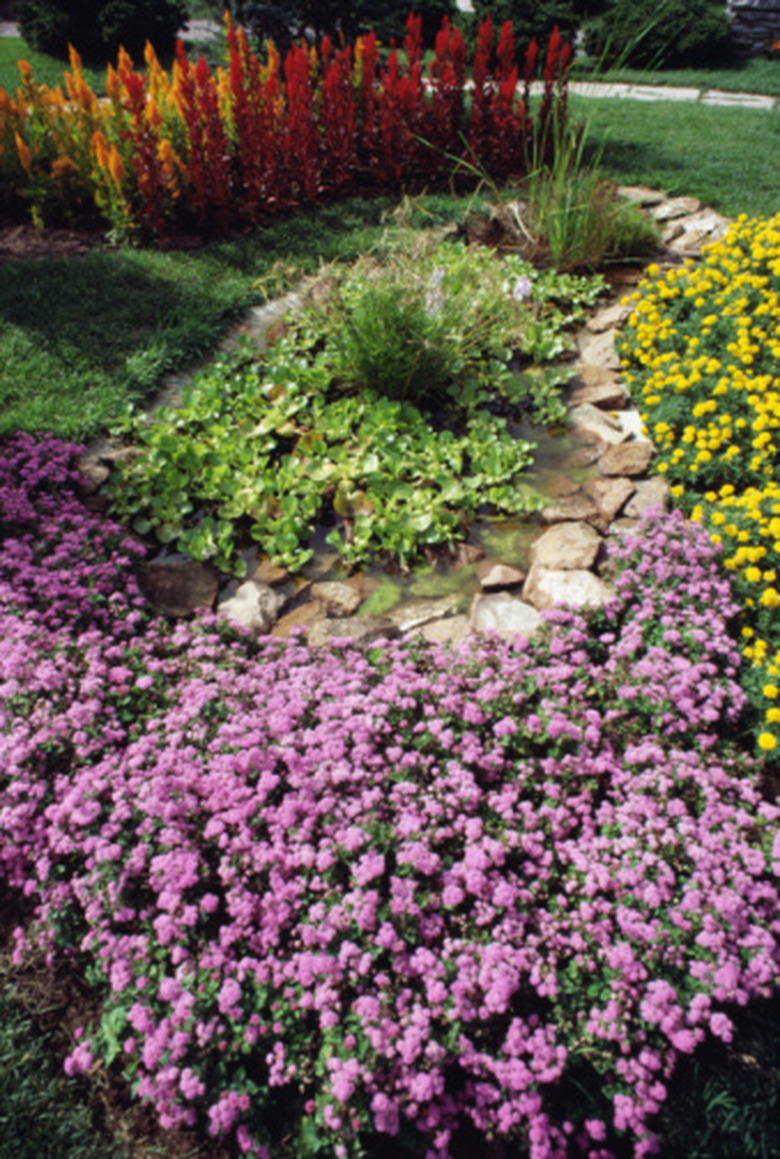When To Apply Pelletized Lime To Lawns
Pelletized lime is finely ground up limestone, according to the University of Kentucky. It is used to raise the soil's pH or make the soil more alkaline for grass growth. The optimal pH for grass is between 6.0 and 7.0. The best time to apply limestone depends on if you want to seed your lawn and the time of year. A limestone application at the wrong time may result in burning your existing grass.
Liming at the Time of Seeding
Gardeners should apply pelletized limestone at the time of seeding if their soil pH test indicates that their soil is too acidic or under 6.0. Lawns should be seeded when temperatures favor the specific type of grass. For instance, cool season lawns should be seeded in the early spring or fall because this grass type dies out during hot summer temperatures. Warm season lawns are seeded in the spring when soil temperatures have risen from the winter. Apply your pelletized lime when it is the optimal time to seed your grass type. Work the pelletized lime into the first 6 inches of topsoil.
Liming Existing Grass
Existing lawns may be limed in the fall, winter or early spring, according to West Virginia University. It is important that you lime when air temperatures are cool to prevent burning your grass with lime. Therefore, pelletized lime applications in the summer should be avoided. Also, the ground must not be frozen or in danger of freezing and thawing. Freezing and thawing soil conditions slow down the limestone's ability to raise the soil's pH, according to West Virginia University.
Liming Acidic Soils
Gardeners who have lawns with acidic soil must apply pelletized limestone several times a year. For example, soil that has a pH of 4.9 or below must be given 50 pounds of limestone per 1,000 square feet four times a year, according to Cornell University. Lawns with a soil pH of 5.0 to 5.5 need lime applications twice a year in the spring and fall with 50 pounds of limestone per 1,000 square feet.
Application
Apply the correct amount of pelletized limestone based on your soil pH. Choose a time to apply the limestone when the soil is moist, according to West Virginia University. Over-saturated soil prevents an even coverage of pelletized limestone. Spread your limestone with a drop spreader and cover the lawn evenly. Water the lawn with 1 inch of water to prevent the grass from burning. To know if you have applied 1 inch of water to the lawn, place several tuna cans throughout the yard. When the tuna cans are full, the lawn has received 1 inch, according to the U.S. Department of Agriculture Natural Resources Conservation Service .
